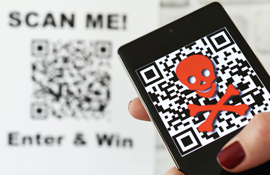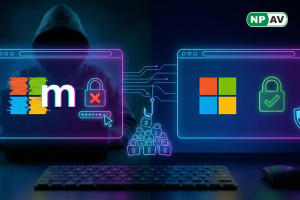Beware of Fake QR Codes! Hackers Are Using “Quishing” to Steal Data

Hackers are exploiting QR codes in a new scam called “quishing”, tricking users into scanning fake QR codes that lead to phishing sites, malware downloads, or financial fraud. These attacks are bypassing traditional security measures, making individuals and businesses vulnerable.
- What is Quishing?
- Quishing (QR Code Phishing) is a cyberattack that uses fake QR codes to trick users into visiting malicious websites.
- These fraudulent sites steal login credentials, financial data, or install malware on devices. - Common Quishing Techniques:
✔ Email Quishing: Attackers send emails with fake QR codes posing as banks, companies, or official organizations.
✔ Fake QR Code Posters: Scammers replace QR codes on public signs (restaurants, parking meters, movie theaters) with their own malicious codes.
✔ Social Engineering Attacks: Fake QR codes are promoted as part of discounts, surveys, or giveaways to encourage users to scan them. - Why is Quishing Dangerous?
- Bypasses traditional security tools (Antivirus and URL scanners can’t detect QR-based threats).
- Steals sensitive data (bank details, passwords, and payment info).
- Installs malware or ransomware, compromising personal and corporate devices.
- Leads to financial fraud, redirecting users to fake payment pages. - Quishing 2.0 – A More Advanced Threat
Hackers are now using multiple layers to evade security:
- Email Impersonation: Scammers send fake QR codes pretending to be from trusted brands.
- Layered Redirects: Users are first directed through legitimate services before landing on a phishing site. - How to Stay Safe from Quishing Attacks
✔ Verify before scanning – Don’t scan QR codes from unknown sources, emails, or posters.
✔ Use a QR Code Scanner with security features – Some apps check for malicious links before opening them.
✔ Enable Multi-Factor Authentication (MFA) – Adds an extra layer of security in case credentials are stolen.
✔ Be cautious of QR codes in emails – Always verify with the sender before scanning.
✔ Train employees and staff – Businesses should educate employees on the risks of quishing.
QR codes are everywhere, but hackers are now using them as a tool for cyberattacks. The rise of quishing proves that cybercriminals constantly evolve their tactics. To stay safe, always verify QR codes, use security tools, and be cautious of unsolicited QR codes in emails or public places.
Protect yourself with NPAV's Mobile Security solutions to detect and block phishing threats!
0 Comment(s)






